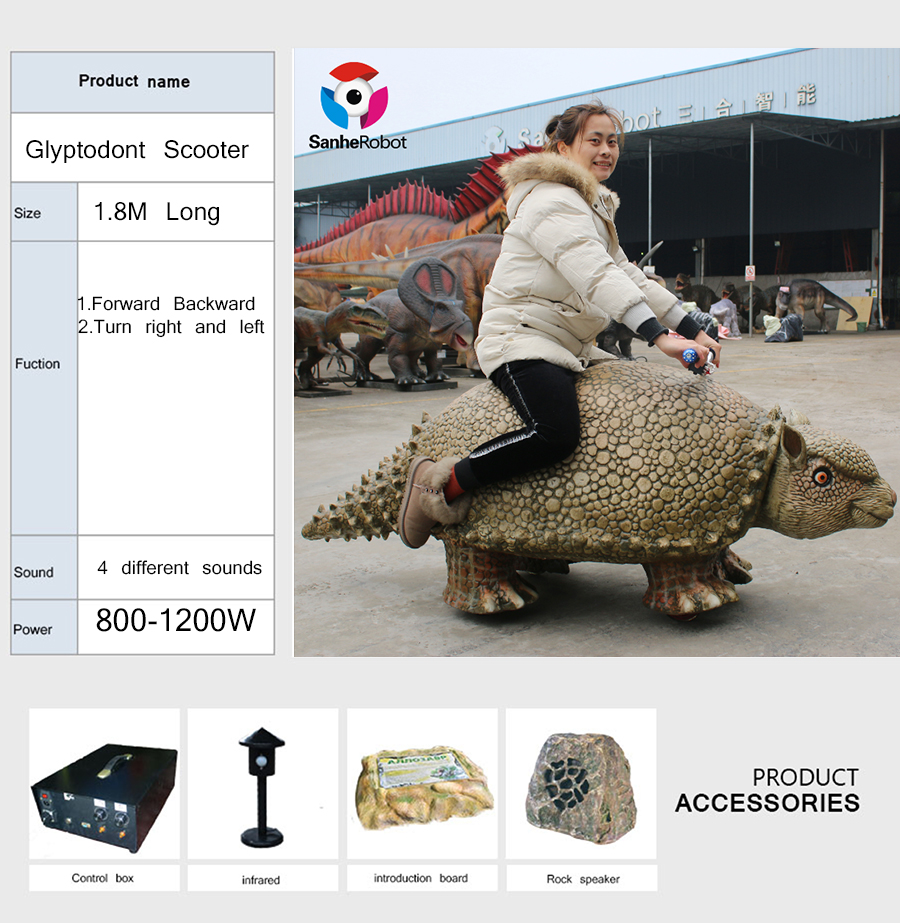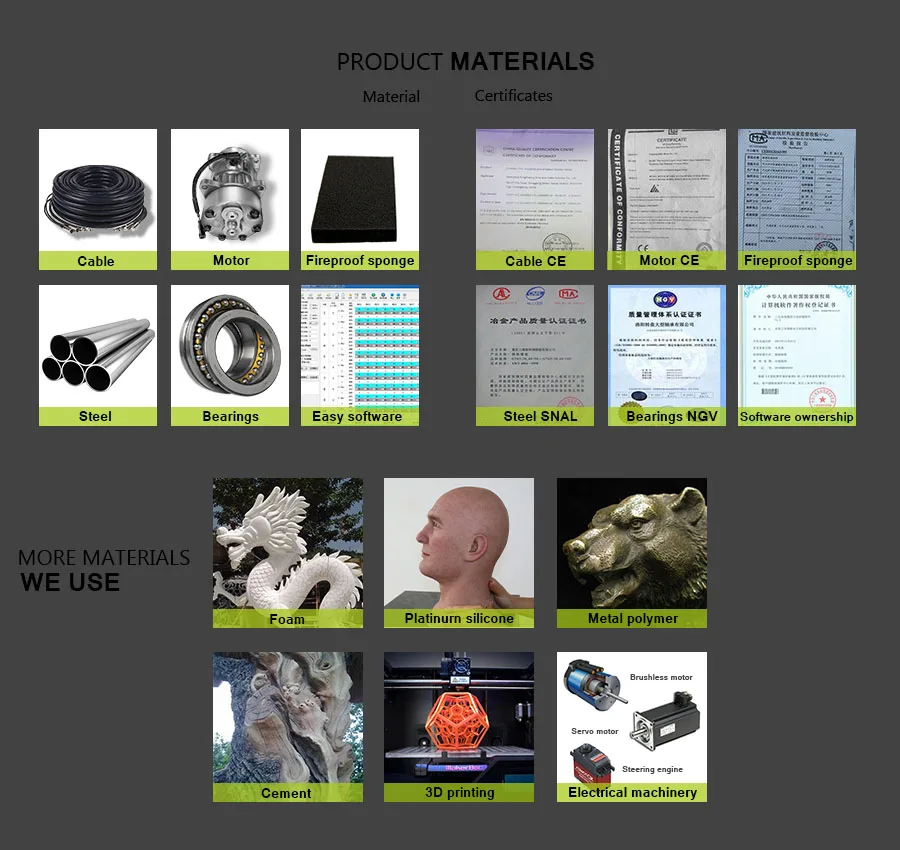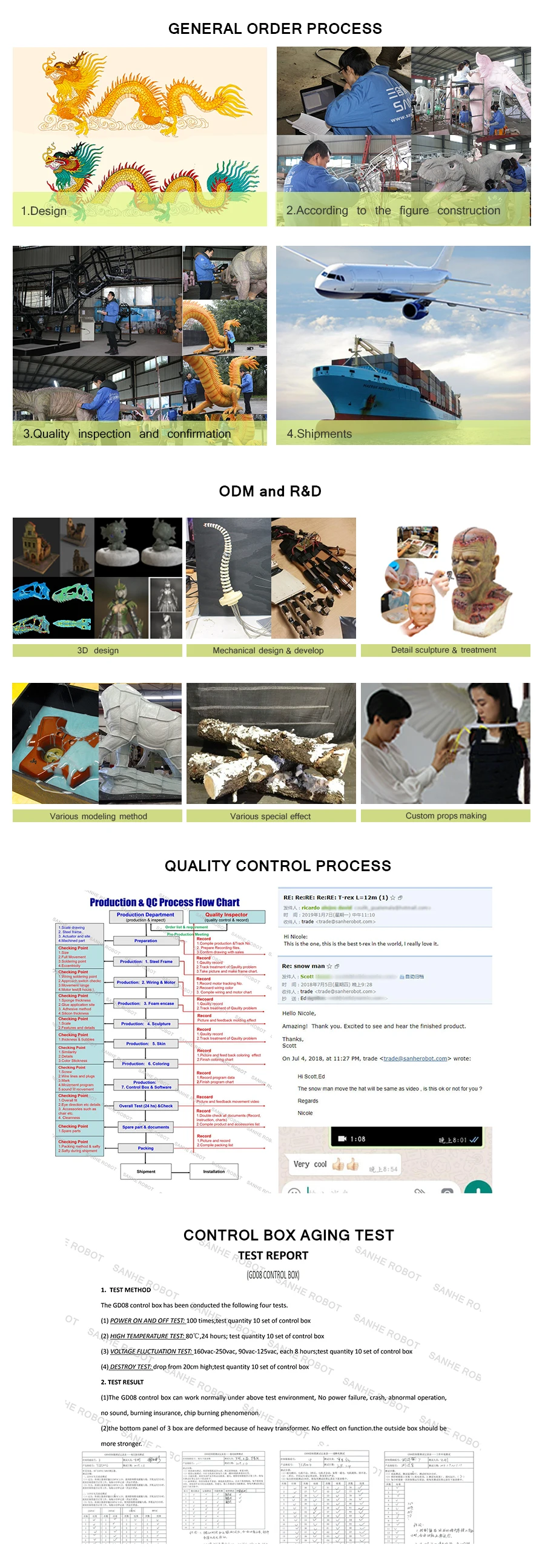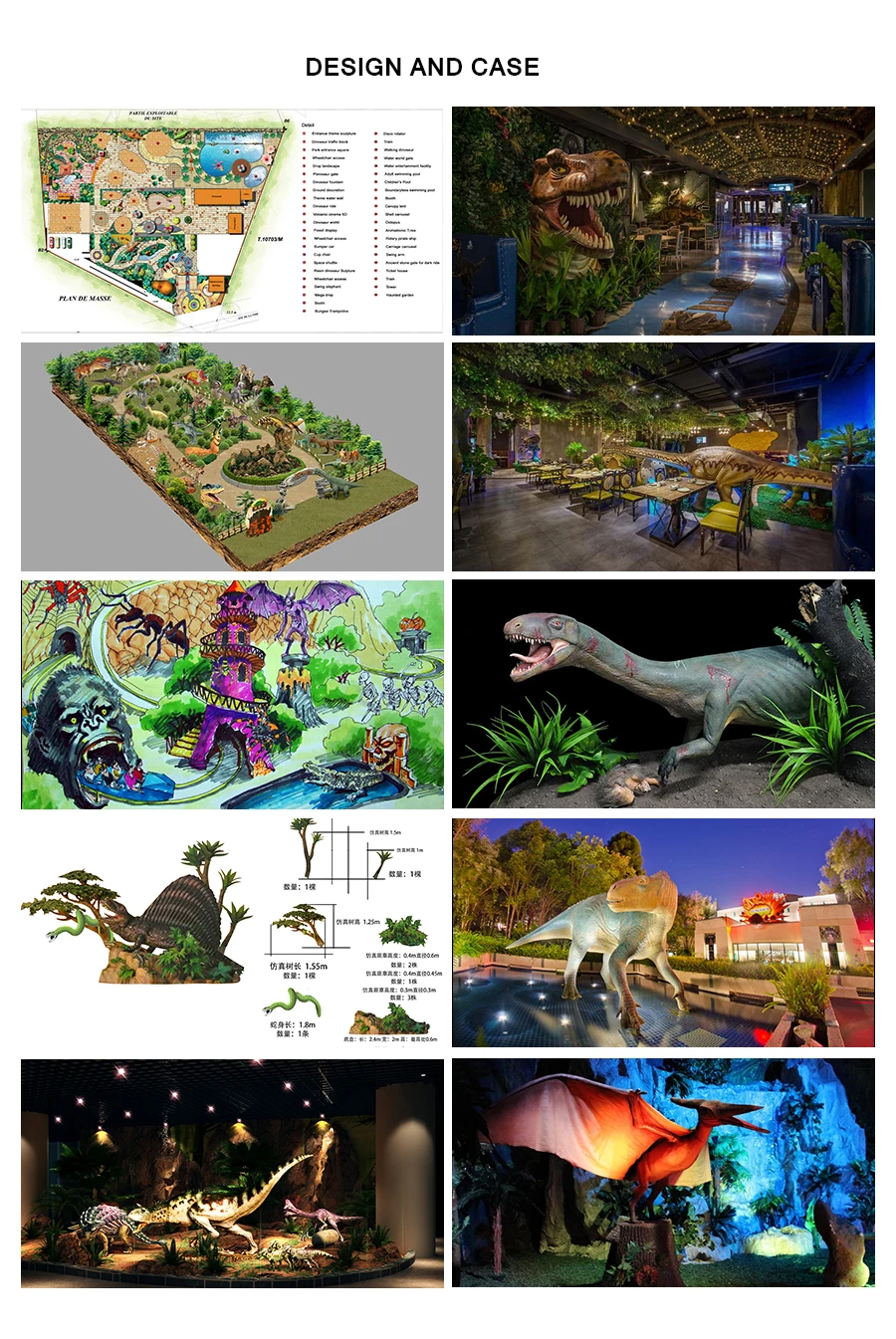

| Input | AC 110/220V ,50-60HZ |
| Plug | Euro plug / British Standard / SAA / C-UL / or depends on request |
| Control mode | Automatic / Infrared / remote / coin / Button / Voice / Touch / Temperature / shooting etc |
| Waterproofing grade | IP66 |
| Working condition | Sunshine, rain, seaside, 0~50℃(32℉~82℉) |
| Optional function | Sound can be increased to 128 kinds Smoke,/ water. / bleed / smell / change color / change lights / LED screen etc interactive(Location tracking) / conversine(currently only Chinese) |
AFTER-SALE SERVICE
| Service | Need be cut for shipping,fwill provide a detailed installation manual. |
| Warranty | We provide 2 years warranty for all of our antrimatronic models, the warranty pieriod starts from freight arrives at destination port. Our warranty covers motor, reducer, control box, etc. |






 kiddie rides ride game for commercial dinosaur ride electric ride on dinosaur
animal for amusement park animal playground children playground equipment animal kids ride popular animatronic equipment kid rides animal rides amusement park rides robotic animal outdoor amusement park rides walking animal rides coin operated animal rides robotic animal rides animatronics rides kids rides manufacturer outdoor play animal animal walking electric robotic rides children indoor playground animal ride
Glyptodon was a genus of large, heavily armored mammals of the subfamily Glyptodontinae (glyptodonts or glyptodontines) – relatives of armadillos – that lived during the Pleistocene epoch. It was roughly the same size and weight as a Volkswagen Beetle, 800–840 kg (1,760–1,850 lb).[citation needed] With its rounded, bony shell and squat limbs, it superficially resembled a turtle, and the much earlier dinosaurian ankylosaur – providing an example of the convergent evolution of unrelated lineages into similar forms. In 2016 an analysis of Doedicurus mtDNA found it was, in fact, nested within the modern armadillos as the sister group of a clade consisting of Chlamyphorinae and Tolypeutinae. For this reason, glyptodonts and all armadillos but Dasypus were relocated to a new family, Chlamyphoridae, and glyptodonts were demoted from the former family Glyptodontidae to a subfamily
Although Darwin is said to have found the first fossils of glyptodontines (the subfamily), the first mention of the genus Glyptodon in Europe was in 1823, from the first edition of Cuvier's "Ossemens Fossiles". The then unnamed Glyptodon was briefly mentioned in a letter from Dámaso Antonio Larra?aga. He had found "a femur... It was about seven pounds, and maybe six or eight inches wide", as well as part of a tail. At the time, the discovery was believed to have belonged to Megatherium, a type of giant ground sloth. A man named Sellow found some carapace plates in three-foot deep clay in Uruguay four years later. That discovery only made the professors even more certain that the discoveries were of Megatherium, since the bones of this prehistoric giant sloth were usually found in similar conditions and Cuvier had said that the genus was loricated
kiddie rides ride game for commercial dinosaur ride electric ride on dinosaur
animal for amusement park animal playground children playground equipment animal kids ride popular animatronic equipment kid rides animal rides amusement park rides robotic animal outdoor amusement park rides walking animal rides coin operated animal rides robotic animal rides animatronics rides kids rides manufacturer outdoor play animal animal walking electric robotic rides children indoor playground animal ride
Glyptodon was a genus of large, heavily armored mammals of the subfamily Glyptodontinae (glyptodonts or glyptodontines) – relatives of armadillos – that lived during the Pleistocene epoch. It was roughly the same size and weight as a Volkswagen Beetle, 800–840 kg (1,760–1,850 lb).[citation needed] With its rounded, bony shell and squat limbs, it superficially resembled a turtle, and the much earlier dinosaurian ankylosaur – providing an example of the convergent evolution of unrelated lineages into similar forms. In 2016 an analysis of Doedicurus mtDNA found it was, in fact, nested within the modern armadillos as the sister group of a clade consisting of Chlamyphorinae and Tolypeutinae. For this reason, glyptodonts and all armadillos but Dasypus were relocated to a new family, Chlamyphoridae, and glyptodonts were demoted from the former family Glyptodontidae to a subfamily
Although Darwin is said to have found the first fossils of glyptodontines (the subfamily), the first mention of the genus Glyptodon in Europe was in 1823, from the first edition of Cuvier's "Ossemens Fossiles". The then unnamed Glyptodon was briefly mentioned in a letter from Dámaso Antonio Larra?aga. He had found "a femur... It was about seven pounds, and maybe six or eight inches wide", as well as part of a tail. At the time, the discovery was believed to have belonged to Megatherium, a type of giant ground sloth. A man named Sellow found some carapace plates in three-foot deep clay in Uruguay four years later. That discovery only made the professors even more certain that the discoveries were of Megatherium, since the bones of this prehistoric giant sloth were usually found in similar conditions and Cuvier had said that the genus was loricated

+86-813-2104677

info@sanherobot.com

+86-13990010824

No.13 Huixin Road, Yantan Town, Yantan District, Zigong City, Sichuan Province, China